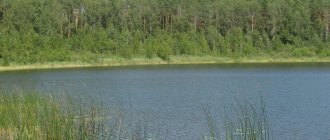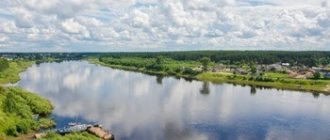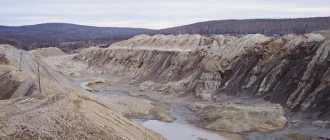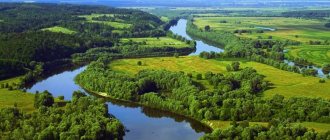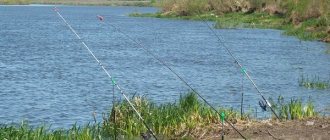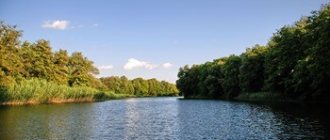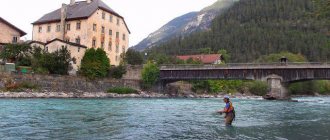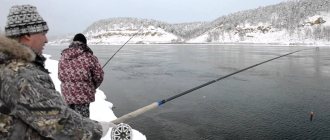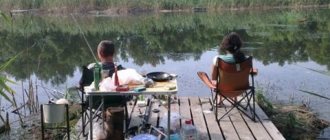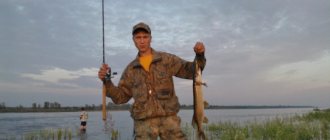Content
- 1 Reservoirs of the region 1.1 Fishing on the Angara River
- 1.2 Fishing on the Irkut River
- 1.3 Fishing on the Lena River
- 1.4 Fishing on Lake Baikal
- 1.5 Other lakes
- 2.1 Summer fishing in Irkutsk and the region
Places for free fishing in Irkutsk
You don't have to pay money to get to a good fishing spot. There are many places in the Irkutsk region where you don’t have to pay a penny. Such places include Coastal gardening. There is a small quiet pond where pike swim.
The source of the Angara River is on Lake Baikal. This is a promising place for fishing, especially in winter. Grayling, ide and dace are found at a depth of 4 meters. There are many fishing spots on Lake Baikal that are not marked on the map. You will have to find out from local residents; they will tell you exactly where it is best to fish and what kind of bait is needed.
The lake is very deep, so it contains a greater variety of ichthyofauna. In some areas the holes reach 744 meters, which is ideal for most fish species. The water here is crystal clear, and the bottom is strewn with snags, so the fish are quite large. In the place that can be seen on the map, whitefish, burbot, grayling and omul bite well.
Reservoirs of the region
Fishing in the Irkutsk region
The entire river network of the region includes more than 67,000 watercourses, which belong to 4 main basins of the main rivers. The Irkutsk region impresses with the number and uniqueness of lakes. There are about 230 of them in the region. It is characteristic that most of the reservoirs in this region are in public use, that is, free for fishing. In the lakes of the region there are 70 species and subspecies of a wide variety of fish, including carp and trout.
Fishing on the Angara River
The river bursts out of Lake Baikal with rapid flows and, winding through an area of 1826 km, flows into the Yenisei. During the year, the Angara often changes water level and current strength. This fact is due to the location of the Bratsk and Irkutsk hydroelectric power stations in the upper reaches of the river, the influence of which complicates summer fishing.
The Angara is distinguished by very clear water, strong currents and an abundance of riffles and rapids. Fishermen come here for sturgeon, dace, burbot, perch and other fish. But the most famous local catch is grayling, both white and black. This fish is plump and fatty at almost any time of the year, and its weight can reach 2 kg.
For anglers, grayling is a cautious fish, as it has excellent eyesight and can distinguish many shades of colors. Fishing in the Irkutsk region on the Angara is considered more successful when fishing with fly fishing, spinning or using homespun tackle. This choice is not without reason - the river bottom is covered with numerous snags and stones. The Angara basin amazes with the number of large and small rivers. There are about 38,000 of them.
Fishing on the Irkut River
The left tributary of the Angara, the Irkut River, is considered mountainous and famous for its colorful landscapes. The river attracts with its violence and swiftness in rocky areas and calmness and ease on the plains. The beginning of the river is considered to be the confluence of the two rivers, the White and Black Irkut, which flow outside the Irkutsk region. Fishing on Irkut is famous for the abundance of grayling, which bites well on the “balda”. Along with grayling, lenok is also often found, which is mainly caught with a spinning rod.
Fishing on the Lena River
The huge and great Lena River, known to everyone for its rich fish resources. Fish in the river can grow up to meter in size, which is explained by the absence of dams and the presence of underwater expanse. And the huge supply of food and food supply for fish allows them to gain decent weight. Therefore, fishing on Lena is a special pleasure. The most valuable fish is the Siberian sturgeon, which never goes to sea. Today, this fish is listed in the Red Book, but breeding it under artificial conditions gives hope for restoring the population of these fish. Grayling, lenok, nelma, pike and giant taimen are also considered excellent prey.
Fishing on Lake Baikal
Lake Baikal is the cleanest, most beautiful and deepest lake in the entire globe. The purity of the water in the lake amazes everyone who has ever been here. After all, a meter thick ice allows you to examine the bottom of the reservoir and its inhabitants even at a depth of 40 m. The water in the lake is also unique in its composition, which has not changed for thousands of years. Fishing on the legendary Baikal is the dream of every fisherman, since the fishing process is interesting and possible here both in winter and summer. The most attractive place for catching the famous Baikal omul is the Chivyrkuisky Bay. In addition to omul, pike, sorog, grayling and other fish bite well here.
Baikal, as a valuable source of water and fish resources, is protected most of the year, and strict fishing rules apply to fishermen. In July and August, when restrictions on many fish species end, fishing peaks. It is during this period that fishermen from all over the country come to Lake Baikal. In summer, the water in the lake warms up well, and predators such as pike and perch become the number one prey.
Other lakes
In the Irkutsk region there are a large number of other lakes that cannot be compared with Baikal either in size or depth. But they contain considerable tourism potential, as well as the possibility of a rich catch.
Each of the lakes is unique in its relief, rockiness, and shape, which often resembles one or another object:
- Lake Guitar
- Lake Heart
- Sable Lakes, which are 3 km long.
The most successful ones for fishing are:
- Mukhor Bay (large perch)
- Small Sea (bream, grayling)
- Monakhovo Lake (perch)
- Chivyrkuiskaya Sarma (horned bream, bream)
The magnificence of the water body of the Irkutsk region makes the area very popular not only among aesthetes, but also among Russian and foreign fishermen.
White threads of the Baikal region. Rough water
Most tourists associate a trip to Lake Baikal with active recreation, extreme hiking and water routes, and hiking romance. Severe, but at the same time incredibly juicy, bright and virgin Siberian beauty has always attracted brutal men, lovers of extreme travel and romantics. It is here, on Lake Baikal, that all travelers experience a crazy outburst of emotions and adrenaline from the extraordinary landscapes and trials they have experienced. This is exactly what all those who are bored with the routine of everyday life, burgherism and office bustle come here for.
Various active routes allow you to combine these outbursts of emotions, endorphins and adrenaline in one trip and get a boost of vital energy for the coming year.
Today we’ll talk about probably the most striking type of active recreation on Lake Baikal - rafting on the fast mountain rivers of the Baikal region.
FEATURES OF ROUTES
The water network of mountain rivers in the Baikal basin is one of the largest in the world thanks to the two largest mountain ranges bordering Lake Baikal on both sides - the gray-haired Khamar-Daban and the snow-white char of the Eastern Sayan mountain range. Here flow such world-famous rivers as the Angara, Irkut, Snezhnaya, Utulik, Oka-Sayanskaya, Zhombolok, Kitoy, Zun-Murin, Khara-Murin and many other rivers no less popular among water sportsmen.

Convenience of transportation and close distances to water routes allow you to saddle almost any unruly river within a couple of hours from Irkutsk, and many different levels and categories of water obstacles give the opportunity to feel like real extreme sportsmen, even to any novice tourist who is ready to test his character and get his share positive emotions. The uniqueness of water trips along the stormy rivers of the Baikal region is that after such trips there are no longer indifferent tourists. It’s worth at least once to see all this naked and wild natural beauty of the Siberian taiga and enjoy the spicy smells of herbs, rafting on a catamaran or rafting on a stormy river in a team of like-minded people, feel the harsh nature of a mountain stream and cope with its wild power - euphoria upon completion of such raftings and positive memories will accompany you years later.

SELECTION OF ALLOY MEDIUM
A little theory. Mountain rivers originate high in the mountains and carry their waters down to the plains and plateaus. Due to significant elevation changes, the flow speed of such rivers reaches 25-30 km/h. Depending on the number of obstacles, such as stones, cliffs, waterfalls and other rivers, they are classified by category from 1 to 6 difficulty categories. Category 1 - calm water of a flat river.

Category 6 - rapids and waterfalls with a height difference of up to 10-15 meters.

Rafting on mountain rivers requires special equipment and vessels. The most famous and used rafting means on Lake Baikal include rafting, catamaran and kayak.
A raft is the most popular vessel for passing mountain rivers and is an ordinary inflatable boat with a bottom in which holes are made to drain any water inside the boat. Unlike conventional inflatable boats, for safety reasons, the raft structure is reinforced with a special stronger shell, double-layer cylinders and special fastenings for passengers’ feet. The raft can accommodate from 6 to 12 people, sitting on both sides of the vessel and a helmsman sitting at the stern. The raft is designed for passing obstacles of 1-5 difficulty categories.
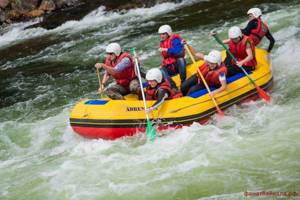
Often, for stronger emotions from independently operating a boat, water tourists use another type of watercraft - a catamaran. Structurally, the catamaran consists of two inflatable cylinders made of durable two-layer material, connected by an aluminum frame.
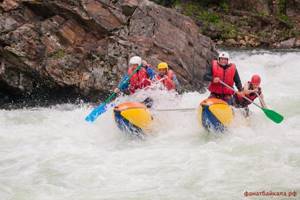
This design makes the catamaran much more stable on the water than a raft and gives a much more thrilling experience, since the number of people on the catamaran is 2-4 people and this requires more accurate and coordinated actions of the team. The catamaran is designed to pass any water obstacles from 1 to 6 categories of difficulty.
More advanced rafting athletes often move to the next level of water skills by switching from rafts and catamarans to kayaks. A kayak is a small two-meter boat made of solid polymer material that can accommodate only one person. To navigate water obstacles, a kayaker must be skilled enough to navigate a turbulent stream alone.
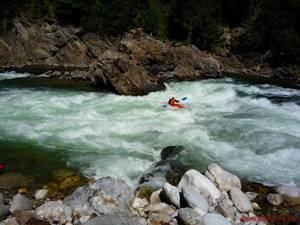
To feel all the charm of extreme water routes, in Irkutsk you can always rent any of the rafting equipment, which will allow you to appreciate the pleasure you get from water trips and decide on the choice of this type of active recreation. (You can rent rafts, catamarans, kayaks and other necessary equipment for rafting and water trips on the website or book by e-mail: [email protected] ).
DESCRIPTION OF ROUTES
1. Nizhny Irkut
Rafting routes along the Irkut River are among the most popular in the Baikal region. The river flows through one of the most picturesque places in the Baikal region - the Tunkin Valley. Irkut originates in the mountain lake Ilchir, located on one of the ridges of the Eastern Sayan Mountains on the land of the indigenous Siberian Soyot tribe not far from the highest mountain peak in Siberia - the Munku-Sardyk peak, carries its waters through the entire Tunkinskaya valley and covering a path of almost 400 km, flows into the legendary Siberian river Angara. Almost along the entire length of Irkut there is a well-trodden road with a large number of picnic fields, so getting to the rafting sites is practically no problem.
The Irkut River is conventionally divided into three sections according to difficulty category: 1. The most rapid section with a large number of obstacles of 2-4 difficulty categories is located in the upper reaches of Irkut and requires maximum concentration and a certain professionalism in completing the route.

2. Middle Irkut passes through flat terrain and here rafting turns into a relaxing mattress vacation.
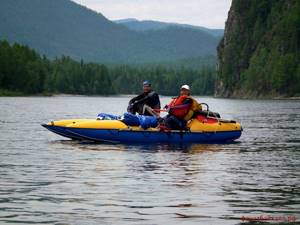
3. The lower canyon Irkut goes through the Zubkogan Gorge and then passes through the Olkha Plateau - here the calm waters in places turn into real water obstacles of 2-3 categories of difficulty, the passage of which requires a certain skill.

The water route along Lower Irkut begins near the village of Anchuk, located in the Tunkinskaya Valley, and ends in the village of Shamanka. During the route, participants cover a distance of about 100 km.

Type of event: active rafting and catamarans along the lower canyon current of Irkut with the presence in places of water obstacles of 2-3 categories of difficulty. The route is not difficult to follow and does not require special physical training, but among the participants it is advisable to have a person familiar with the route of this route. A more detailed and fascinating description of this route can be read here. This is one of the simplest rafting routes in the Baikal region.
Route diagram and drop-off points/transport: you can get to the village of Anchuk from Irkutsk by private car or by regular shuttle bus on the Irkutsk-Arshan route. It is better to go on a trip in two cars, one of which is left at the end of the rafting in the village of Shamanka (47 km from Irkutsk), and the second one is used to drive to the starting point of the rafting in the village of Anchuk. After completing the rafting, you can return with the car left in Shamanka and pick up the second car.
Route map
Route difficulty: entry-level route (category 2-3) lasting two days. Route length: 100 km.
2. Upper Irkut
Rafting along the upper Irkut is one of the most popular routes among more advanced athletes who have some experience in water travel. The route begins near the village of Mondy, not far from the border with Mongolia. The mountain section ends after 30 km near the bridge over the river. Despite the relatively small section of this route, an incredible number of water obstacles of 3-4 difficulty categories require constant monitoring and adrenaline is produced continuously throughout almost the entire route.
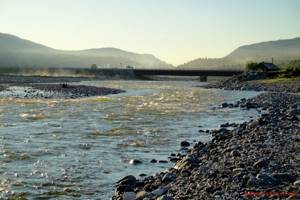
And thanks to the snow-white caps of the Sayan char and the indescribable beauty of the changing landscapes, you can’t stop looking around and admiring the unearthly pictures of Siberian nature, which are painted in a creative impulse by the brush of the invisible greatest artist.
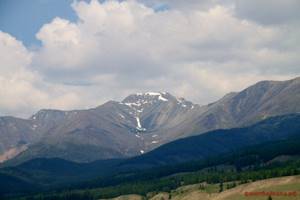
Type of event: active rafting, catamarans and kayaks along a mountainous section of the river with obstacles of 3-4 difficulty categories. A 30 km section can be covered in 3 hours. Watermen go through this section several times over the weekend in order to get the most out of the experience. Those who want to enhance the sensations of this route go even higher along the Irkut River (30 km upstream of the village of Mondy) and start from the popular place “Strelka” - the confluence of two rivers - the Black Irkut, which carries its waters from Lake Ilchir and the White Irkut , running down the slopes of the greatest peak of Eastern Siberia - Mount Munku-Sardyk.
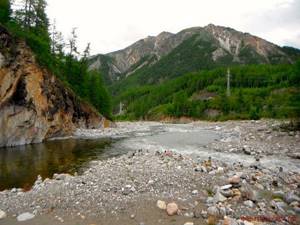
Layout and drop-off points/transport: you can get to the starting point in the Monda afterglow from Irkutsk by car along the Kultuksky highway, then turn right in the village of Kultuk towards the Tunkinskaya Valley. Distance from Irkutsk to the village. Monda is about 300 km. It is better to go on this route in two cars, leaving one of them at the start of the rafting, and the second at the finish, so that you can then return for the first car.
Route map
Difficulty of the route: intermediate level route (category 3-4) for watermen with experience of walking along mountain rivers
Notes: given the location of this route in the border area (not far from the village of Mondy there is the border with Mongolia), participants in this water trip must have passports with them for identification when traveling through the border area. You can read more about this route here. In the second half of summer, organized rafting trips are held along Upper Irkut with instructors and active team recreation in nature, where everyone who wants to test themselves can take an active part by contacting the rafting organizers.
3. Oka Sayanskaya
The water route along the Oka Sayanskaya River is one of the longest and most autonomous routes, as it runs far from civilization and for almost the entire 400 km length it is impossible to leave this route - there is untouched taiga and the Sayan mountain range all around.
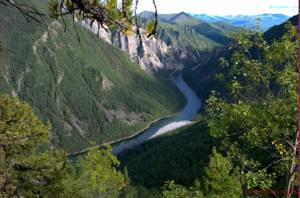
The Oka-Sayan River originates in the small high-mountain Lake Okinskoye (in the same area where the Irkut River originates) and carries its waters along the entire East Sayan Range, then flowing into the Angara in the area of the Bratsk Reservoir.
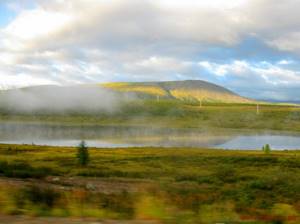
The Oka Sayanskaya is one of the most abundant mountain rivers in Siberia. The river is characterized by powerful rapids, high swells, deep whirlpools and other obstacles of 4-5 difficulty categories.
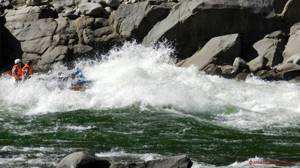
Along the entire route there are a huge number of resting places where you can not only spend the night in prepared clearings with a fireplace, but also relax your tense limbs after a long rafting trip by taking a steam bath in a magnificent bathhouse.
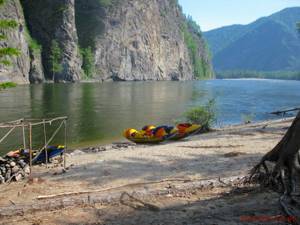
The route along the Oka Sayanskaya is also famous for its museums of watermen. For several decades now, watermen from all over the world have been trying to leave various intricate items in these open-air museums and make memorial plaques.

Type of event: the route along the Oka usually begins in the village of Orlik, which is located 80 km further behind the village of Mondy. Since ancient times, this territory belonged to the indigenous tribes of Siberia - the Soyots, whose main craft was cattle breeding. Given the high-mountainous nature of the area, yaks are domesticated here.
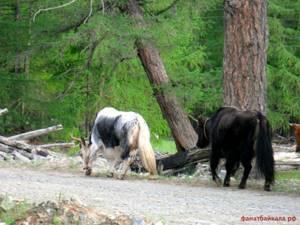
You can get to Orlik from Irkutsk along the same route as for rafting on the Irkut River, only after the village of Mondy you need to turn right and, having crossed the bridge over the Irkut River, continue driving along a well-compacted gravel road with a length of more than 150 km.
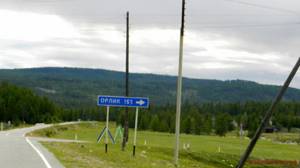
The water route along the Oka is a rather difficult route of 4-5 difficulty categories. Rafting is carried out on rafts and catamarans. This route has a legendary extreme section - the Orkha-Bom tract with high inaccessible vertical rock cliffs on both sides and water obstacles of category 5 difficulty. All this a little gloomy and at the same time incredibly impressive in its beauty splendor often creates psychological discomfort among tourists passing this route for the first time.

Many extreme water sportsmen from all over the world consider it an honor to pass this section. The Orkha-Bom tract, with a length of less than 60 km, has 73 obstacles, of which 11 rapids of the 5th category of difficulty, 15 rapids of the 4th category of difficulty.
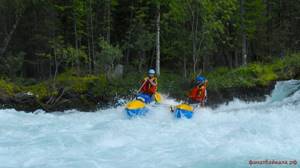
It takes 5-6 days to complete the entire water route along the Oka Sayanskaya. Considering the high autonomy of the rafting, it is necessary to provide in advance everything necessary for tent accommodation and food for at least a week.
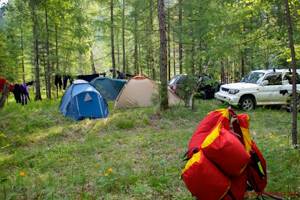
Scheme and places of delivery/transport: the village of Orlik is located at a distance of 450 km from Irkutsk. Travel time by car to the starting point is about 6-7 hours. Considering that the start and finish places are significantly distant from each other, it is convenient to get on the route and leave the route at the end of the rafting by hired transport. (Contact for pickup by minibus - (3952) 910303, Dmitry). The route ends after 400 km in the village of Verkhneokinsky not far from the Moscow highway near the large settlement of Zima, located 350 km from Irkutsk.
Route map
Difficulty of the route: a fairly difficult route of 4-5 difficulty categories for watermen with sufficient experience in walking along mountain rivers.
4. Zhombolok
Rafting on the Zhombolok River is one of the most unique and remarkable in the Baikal region. A fairly small river Zhombolok, which is a tributary of the Oka-Sayanskaya River, carries its waters into the Oka Sayanskaya River along the old bed of a lava flow that came down from the slopes of an ancient volcano and passed more than 50 km along the foothills of the Sayan Range hundreds of thousands of years ago.
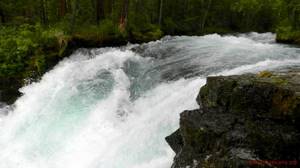
One of the branches of the Zhombolok River, separating from the main channel, very picturesquely flows into the Oka with a spectacular waterfall more than 30 meters high.
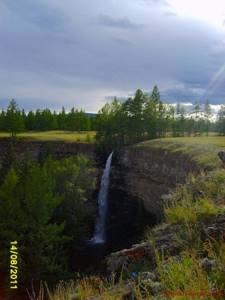
Winding and meandering, Zhombolok carries its stormy waters along lava banks made of sharp tuff at a speed of 10-12 m/s with a channel width of no more than 10 meters (for comparison, the average speed of mountain rivers is 6-7 m/s). All these factors together give a huge dose of adrenaline to water athletes when passing the obstacles of this river.
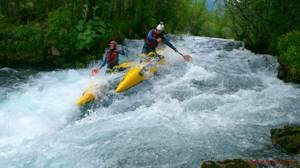
It is not for nothing that many world-famous water sportsmen cherish in their dreams the passage of this truly legendary river.
Type of event: extreme route for trained water athletes. A fairly small section of 30 km in length can be covered in 2 hours. Due to the large number of water obstacles concentrated here, the route is rolled back 3-4 times over the weekend. The most famous water obstacle on Zhombolok is the Catapult rapids of category 5 difficulty. This waterfall, more than 5 meters high, is often impossible for experienced professional watermen to conquer on the fly.
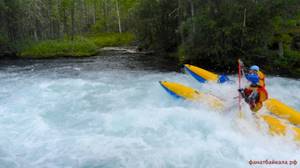
Despite the complexity, this water route can be enjoyed by novice watermen, since most water obstacles are easily surrounded from the shore, and the narrow river bed allows you to set up convenient belays next to the obstacle, which significantly reduces the risk when passing rapids. But the lush and unearthly landscapes and high-mountain air that open up in these places intoxicate you almost instantly and create a feeling of the unreality of what is happening.

Scheme and places of transfer/transport: you can get to the Zhombolok River by following the same route as to the Oka Sayanskaya River. To the village Orlik can be reached from Irkutsk in a regular rear-wheel drive car, first along an asphalt road (300 km) and then along a gravel road (153 km). Next, you need to transfer to an army Zil-130 in Orlik (you can rent a car with a driver for delivery directly in the village of Orlik from local residents) and drive another 50 km up along the bed of the Zhombolok River.
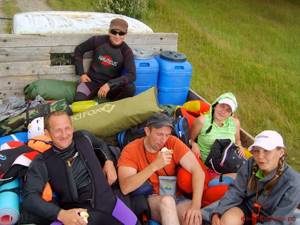
Departure from the route goes from the same place through Orlik back to Irkutsk.
Route map
Often water tourists combine rapids along the Zhombolok River with a water route along the Oka-Sayanskaya River, since the routes pass close to each other. To do this, after hauling the Zhombolok River (2-3 days) on Zile-130, they return to Orlik and from there they start along the Oka Sayanskaya River on an autonomous water route to the village of Verkhneokinsky (rafting for 5-6 days).
Difficulty of the route: a fairly difficult route of 4-5 difficulty categories for watermen with sufficient experience in walking along mountain rivers.
5. Snezhnaya
All mountain rivers previously described in this post originated in the Eastern Sayan Mountains. The water arteries of another Baikal ridge - Khamar-Daban - are no less graceful and magnificent.

The Snezhnaya River is rightfully considered the pearl of Khamar-Daban. Legends are made about the beauty of the mountain passes and the purity of the azure waters of this river, and its violent character is worthy of the first pages in the tale of the harsh and inaccessible wild Siberian routes.
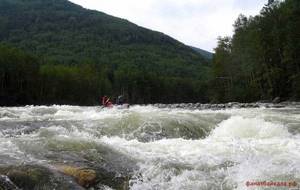
Rafting on the rivers of Khamar-Daban is more difficult in that it takes place in remote places where there are no direct, well-trodden roads and the delivery requires more time and effort. The exit from these routes is simple, since almost all the mountain rivers of Khamar-Daban lead to Lake Baikal and the federal highway P-258 and railway stations, from where it is convenient to get to Irkutsk or Ulan-Ude.
Type of event: extreme route along the Snezhnaya River is suitable for trained athletes. Traveled on catamarans and kayaks. Quite difficult casting and wild places are not an obstacle for real water enthusiasts. The route, 140 km long, can be covered in 3-4 days. The unpredictable nature of the river and the inhospitable weather of Khamar-Daban can increase the time it takes to complete the route.
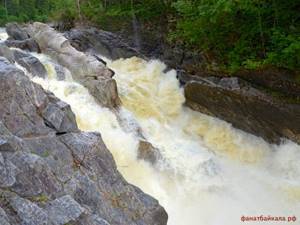
Scheme and places of delivery/transport: There are 2 options for vehicle-horse transportation to the Snezhnaya River:
Option 1 - by car from Irkutsk along the Kultuksky tract to the city of Slyudyanka (150 km from Irkutsk) and then by horse or all-terrain vehicle across Patovo Lake, past the Shubutui stream to the confluence with the Kharnakhoituy stream. After the confluence, Shubutui becomes quite suitable for rafting and in this version of the transfer the active rafting part of the Snezhnaya River is completely traversed. The length of this route is approximately 100-110 km. Option 2 - by car from Irkutsk to the village of Murino (160 km from Irkutsk) and then on horseback or an all-terrain vehicle along the Langutai River, through the Langutai Pass, Nukhene-Daban Pass, Bairi Pass with access to the Bairi camp on the Snezhnaya River. The length of such a transfer is approximately 80 km.
For both options, the delivery time is at least 2 days. Therefore, watermen often choose the third option of transfer - by helicopter (from Irkutsk to the starting point is a 2-hour flight). Although this is more expensive, it is also a more comfortable option with significant savings in time for casting.
The rafting ends after 140 km in the village of Vydrino (the Snezhnaya River carries its waters directly to Baikal), from where you can comfortably reach Irkutsk or Ulan-Ude by train or car along the P-258 highway.
Route map
Difficulty of the route: a fairly difficult route of 4-5 difficulty categories for watermen with sufficient experience in walking along mountain rivers.
A diary of rafting on this river with a detailed description of the route can be read here.
6. Khara-Murin
Another one of the most beautiful waterways of Khamar-Daban. The Khara Murin is a typical representative of Siberian mountain rivers with crystal spring water and an unpredictable, stormy temperament.

Type of event: extreme route for trained athletes. Traveled on catamarans and kayaks. The 35 km section can be covered in 1 daylight hours, but the quantity and quality of water obstacles make it a favorite route for many watermen.

Scheme and places of delivery/transport: By car from Irkutsk towards Khamar-Daban to the city of Baikalsk (Solzan village). Further on horseback or on foot along the Bol stream. Osinovka, through the Osinovy Golets pass to the confluence of the Saibat River into Khara-Murin. This 20 km overland route takes 1 light day.
Rafting with a length of about 25 km takes 1 day with access to the village of Murino near Lake Baikal and the federal highway P-258 and the railway station. From here you can return by car or train back to Irkutsk or Ulan-Ude.
Route map
Difficulty of the route: a fairly difficult route of 4-5 difficulty categories for watermen with sufficient experience in walking along mountain rivers.
7. Langutaisky threshold
Unlike the inaccessible rivers of Khamar-Daban, this small section of the Khara-Murin River is located near the federal highway P-258 and is very convenient for access by car or train. Despite the fact that this is just one rapid, which is passed by water tourists many times, the photogenicity and grace of this rapid is so unique that it is favored by both beginners and experienced athletes. The spectacular passage of this rapid, while simultaneously honing his skills in keels and Eskimo rollovers, is captured in many photographs about water tourism in the Baikal region.
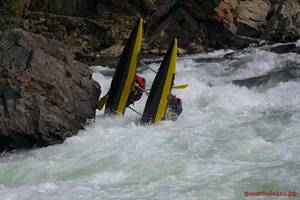
On this threshold, in early May, the organizers of Sibraft.rf hold a water festival that has already become an annual event - White Water Day, which brings together hundreds of water sports fans from all over the Baikal region.
Type of event: Route for beginner watermen. Traveled on catamarans and kayaks. The rapid (a 500-meter-long section) rolls back repeatedly with spectacular keels and flips.

For novice water riders, this is often a ticket to the infectious world of extreme water adventures, and experienced athletes have chosen this area for training and honing their skills.
Scheme and places of delivery/transport: By car from Irkutsk towards Khamar-Daban to the bridge over the Khara-Murin river near the village of Murino (25 km along the federal highway east of Baikalsk). Immediately after the bridge, turn left into a clearing where the camp is set up. Then walk 4 km up the Khara-Murin River to the Langutai Rapids. After rolling away the rapids, we return downstream to the camp near the bridge.
Route map
You can read more about this water route here.
VALUABLE ADVICE AND CONTACTS
— In order for only positive emotions to remain from active water routes in the future, it is necessary to think in advance and take with you everything necessary for such routes. Here is the basic list of necessary and mandatory equipment and things for rafting on whitewater rivers: 1. Life jacket (volume of at least 20 liters) 2. Helmet 3. Carrot (rescue line) 4. Wet protective wetsuit (made of neoprene) 5. Gloves - any of cotton, neoprene, synthetics 6. Sunglasses 7. Neoprene shoes or sandals (which you don’t mind getting wet) 8. Spare paddle 9. GPS navigator and route map (for long routes) 10. Action camera or camera ( then you will greatly regret that you were not able to digitally capture all the emotions experienced and the beauty seen) 11. Pump and repair kit for a catamaran/raft 12. Spare dry set of clothes and shoes 13. Drybags (sealed bags for transporting things) 14. First aid kit with the essentials for emergency medical care (iodine, bandage, plaster, ammonia, etc.)
— If you don’t have your own rafting and water equipment, everything you need for any water and hiking active and extreme routes can be rented for any period here. (tel. +7 (3952) 747436)
— Considering the complexity of independent transportation using your own transport, you can always order transportation from Irkutsk to the starting point and return from the route. Contact for ordering a minibus +7 (3952) 910303, Dmitry)
— A number of water routes of 4-5 difficulty categories described here are not recommended to be completed independently without the appropriate experience and instructors. You can order an organized rafting trip with the participation of an instructor and guide on the website sibraft.rf.
Fishing spots in the Irkutsk region
Fishing places in Irkutsk
Sorog is found in Chivyrkuisky Bay. The Baikal omul rises to the surface in July and August to bask. Lenok becomes active in early September.
Grayling hunters have marked capes Zama and Khoboy. The largest individuals swim in the northern part of the deepest lake on the planet. The noble fish can be found here near the shore. But more often they use the method of fishing from boats, when the fish are driven into a trap, foaming the water with boat propellers. A small fish that begins to rush around attracts a hungry grayling. Local fishermen will demonstrate this unique method for a fee. Other great reservoirs of water should not be ignored either. The Lena (bream, lenok, sterlet) and Angara (sturgeon, gudgeon, perch, tugun) rivers have traditionally been rich in various species of fish.
For the lazy, fishing in Irkutsk at the local reservoir is recommended. You won’t see any special beauty here, but a stable bite is guaranteed. It would also be nice to be on the Squares closer to the dam and Warm Lakes. Tourists and travelers should familiarize themselves with prohibited fishing areas in advance if they decide to visit the region during fish spawning. Restrictions may relate to the method of fishing and the use of boats. This applies to pike, lenok, taimen and other species. A little about winter. It will be hot on Baikal. After all, at this time you can fish in the depths without a boat.
For the most desperate, extreme tours are organized along small taiga rivers. The fishing itself will be calm and quiet. But getting to a quiet backwater is quite difficult without a guide and reliable equipment (tracked). A great option for a long weekend or vacation.
Summer fishing in Irkutsk and the region
Summer fishing is a popular form of recreation among men and sometimes women. Summer fishing on Baikal most often takes place in the Small Sea area - this strait is very shallow and warms up well, so in summer you can catch a large number of fish here.
The summer fishing period begins at the end of May and lasts until September. Among amateur fishermen, such types of fish as omul, whitefish and grayling are in particular demand. A special feature of this bay in summer is that the fish found here are very large; even a beginner can easily catch a pike weighing 5–10 kg.
The easiest time to catch omul is in September, grayling bites well from July to September, and it is better to go out for pike, perch and sorb during the summer fishing period. Many people think that perch fishing can only be done in winter, but this is not true. In summer, perch bites well on Lake Baikal, but only if there is stable, warm weather, which rarely happens in these regions. In summer, perch can be caught from the shore; this fish is found in shallow water. For bait, it is best to use a pink spinner, as its color reminds the fish of crustaceans, which perch loves very much. You can also fish with a fishing rod using a landing net. It is best to catch perch at night on a boat, illuminated by a flashlight. Donka is used as bait.
Winter fishing in Irkutsk and the region
Winter fishing is no less popular than summer fishing. Winter fishing is carried out in the same places as summer fishing, but it allows you to fish from great depths without using a boat. Ice fishing on Lake Baikal is possible from late December to early May. As a rule, experienced fishermen prefer winter fishing, while summer fishing is preferred by beginners. The Winter Games has always been a very interesting event for fishing lovers. These are winter competitions that also include fishing.
Fish biting forecast in the Irkutsk region, Irkutsk
| Weather forecast and fish bite | Irkutsk, from 02/17/2021 to 02/19/2021 | |||||||||||
| SR | Thu | PT | ||||||||||
| Times of Day | Night | Morning | Day | Evening | Night | Morning | Day | Evening | Night | Morning | Day | Evening |
| Cloudiness, precipitation | Partly cloudy | Partly cloudy | Mainly cloudy | Partly cloudy | Partly cloudy | Mainly cloudy | Mainly cloudy | light snow | light snow | light snow | Mainly cloudy | light snow |
| Temperature °C | -15 | -15 | -15 | -6 | -7 | -7 | -9 | -3 | -8 | -12 | -16 | -7 |
| Pressure, mm. | 771 | 771 | 768 | 762 | 762 | 764 | 764 | 761 | 765 | 767 | 762 | 755 |
| Direction, | Wind southeast | Wind southeast | Wind southeast | Wind southeast | Wind southeast | Wind southwest | Wind northeast | North wind | Wind northwest | Wind northwest | East wind | Wind southeast |
| wind speed | 3 m/s | 4 m/s | 5 m/s | 5 m/s | 2 m/s | 1 m/s | 1 m/s | 3 m/s | 4 m/s | 1 m/s | 1 m/s | 2 m/s |
| According to the forecast, they will bite on: bloodworms crucian carp | 0% | 45% | 40% | 35% | 0% | 55% | 40% | 30% | 0% | 55% | 40% | 30% |
| According to the forecast, they will bite on: bloodworms Carp | 0% | 10% | 5% | 10% | 0% | 20% | 5% | 5% | 0% | 20% | 5% | 5% |
| According to the forecast it doesn't bite Carp | 0% | 0% | 0% | 0% | 0% | 0% | 0% | 0% | 0% | 0% | 0% | 0% |
| According to the forecast, the fish will bite on: live bait (jigs), winter spinners, balancers Pike | 0% | 45% | 60% | 35% | 0% | 75% | 60% | 50% | 25% | 75% | 60% | 50% |
| According to the forecast, they will bite on: bloodworms, winter spoons, balance beams Perch | 0% | 55% | 50% | 45% | 0% | 65% | 50% | 40% | 0% | 65% | 50% | 40% |
| According to the forecast, the fish will bite on: live bait, winter spinners, balancer Zander | 45% | 55% | 30% | 45% | 45% | 65% | 30% | 40% | 55% | 65% | 30% | 40% |
| According to the forecast, the fish will bite on: bloodworms, oparish, small spoons Chekhon | 0% | 45% | 35% | 35% | 0% | 50% | 35% | 25% | 0% | 50% | 35% | 25% |
| According to the forecast, they will bite on: bloodworms, maggots, bark beetles, burdocks Dace | 30% | 45% | 35% | 35% | 30% | 50% | 35% | 25% | 35% | 50% | 35% | 25% |
| According to the forecast, they will bite on: bloodworms, maggots, bark beetles, burdocks Ruff | 30% | 45% | 30% | 35% | 30% | 50% | 30% | 25% | 35% | 50% | 30% | 25% |
| According to the forecast, the fish will bite on: bloodworms, spoons, balance beams Trout | 0% | 50% | 25% | 30% | 0% | 60% | 25% | 20% | 0% | 60% | 25% | 20% |
| According to the forecast, they will bite on: bloodworms, maggots, bark beetles, burdocks Chub | 10% | 50% | 25% | 30% | 10% | 60% | 25% | 20% | 20% | 60% | 25% | 20% |
| According to the forecast, they will bite on: bloodworms, oparish, spinners Grayling | 0% | 50% | 25% | 30% | 0% | 60% | 25% | 20% | 0% | 60% | 25% | 20% |
| Doesn't bite Asp | 0% | 20% | 0% | 10% | 0% | 30% | 0% | 0% | 0% | 30% | 0% | 0% |
| According to the forecast, they will bite on: maggot, bloodworm Rudd | 0% | 40% | 30% | 30% | 0% | 50% | 30% | 20% | 0% | 50% | 30% | 20% |
| Bait: maggot, bloodworm Bream | 45% | 40% | 20% | 30% | 45% | 50% | 20% | 20% | 55% | 50% | 20% | 20% |
| Bait: worm, live bait, spinner Burbot | 50% | 40% | 30% | 40% | 50% | 80% | 30% | 60% | 90% | 80% | 30% | 60% |
| Bait: maggot, bloodworm Roach | 0% | 55% | 50% | 35% | 0% | 75% | 50% | 40% | 0% | 75% | 50% | 40% |
| Bait: maggot, bloodworm Bleak | 0% | 50% | 40% | 40% | 0% | 50% | 40% | 30% | 0% | 50% | 40% | 30% |
| Bait: maggot, bloodworm, bark beetle Ide | 0% | 30% | 10% | 20% | 0% | 40% | 10% | 10% | 0% | 40% | 10% | 10% |
| Bait: no Som | 0% | 0% | 0% | 0% | 0% | 0% | 0% | 0% | 0% | 0% | 0% | 0% |
Meanings of symbols and colors of the bite forecast table
| Mon | Monday |
| Tuesday |
| Wednesday |
| Thursday |
| Friday |
| Saturday |
| Sunday |
| Probability of a bite in % (from 0 to 100) |
Features of fishing in the Irkutsk region
The Irkutsk region is famous for its water resources, due to which fishing tourism is extremely widely developed here. Many fishermen come here to fish in the local fish-rich places. Particularly noteworthy is Lake Baikal, which is a kind of magnet not only for fishermen, but also for ordinary tourists who want to see with their own eyes the beauty of this miracle of nature. Fishing bases in the Irkutsk region are located on the banks of various reservoirs, lakes and rivers, of which there are a great many in this region.
What kind of fish can you catch in Irkutsk

Irkutsk belongs to Eastern Siberia, so there are many interesting species of fish here. Moreover, you can see both familiar representatives and rare specimens. It is worth studying the map of fishing spots to know about the best bodies of water for fishing.
For the best catch, equip yourself with a wide variety of baits and tackle. This will increase your chances of catching big fish. The most common ichthyofauna found in the Irkutsk region is:
- Ide;
- Roach;
- Bream;
- Grayling;
- Dace;
- Pike;
- Carp;
- Soroga;
- Carp;
- Podleschik;
- Burbot;
- Whitefish;
- crucian carp;
- Omul.
Some species are very difficult to catch. So, in order to catch burbot, whitefish and omul, you will have to try and devote a lot of time to fishing.
Tips for fishing in Irkutsk and the region
- Within the city limits, fishing is allowed only with sporting gear. It is permissible to use no more than 10 hooks on one tackle.
- Fans of extreme fishing can try their hand at underwater fishing. However, the use of scuba gear and other auxiliary equipment, such as a gaff, is prohibited.
The city also has a fishing ban in certain areas. These include the following places:
- The hydroelectric dam is a popular fishing area. Famous for its promising fishing. However, fishing 3 km downstream from the dam is prohibited.
- Also, some of the most promising areas for fishing are places near bridges. In Irkutsk it is prohibited to fish at a distance closer than 500 m from them.
In addition, in the city there is a ban on catching fish listed in the Red Book. Catching taimen and lenok can result in a large fine.
- Perhaps the most famous body of water in the region is the Angara River. Previously, it was famous for its high content of sturgeon fish. At the moment the situation is unfortunately deplorable. Here you can fish for lenka and taimen. Grayling are actively biting. Good catch results for crucian carp. Dace is often found.
- Among other rivers in the region, the Ushakovka and Irkut are recognized as the most “fishy”.
- The hydroelectric dam is also famous for its fish resources.
- In the bays located within the city near the TV tower, you can successfully fish for roach and crucian carp.
- In the Novo-Leninskaya part of the city, a lake-marsh complex is a promising reservoir for fishing.
- The whole city is famous for its famous “ruff bays”. They are located in the Irkutsk reservoir.
Paid fishing in the Irkutsk region
Paid fishing in the Irkutsk region is not only about pike fishing. but also a great place for picnics. On the territory of the paid ponds there are gazebos, a place for making a fire and cooking the catch on the grill. Some reservoirs have children's playgrounds where your child can play under supervision.
If you are a novice fisherman or do not have your own gear, there are rental points for all permitted types of gear at paid ponds. For an additional fee, experienced instructors will teach you the art of fishing and help you choose the necessary gear, groundbait and bait for the appropriate fishing conditions.
see also
|
|
|
